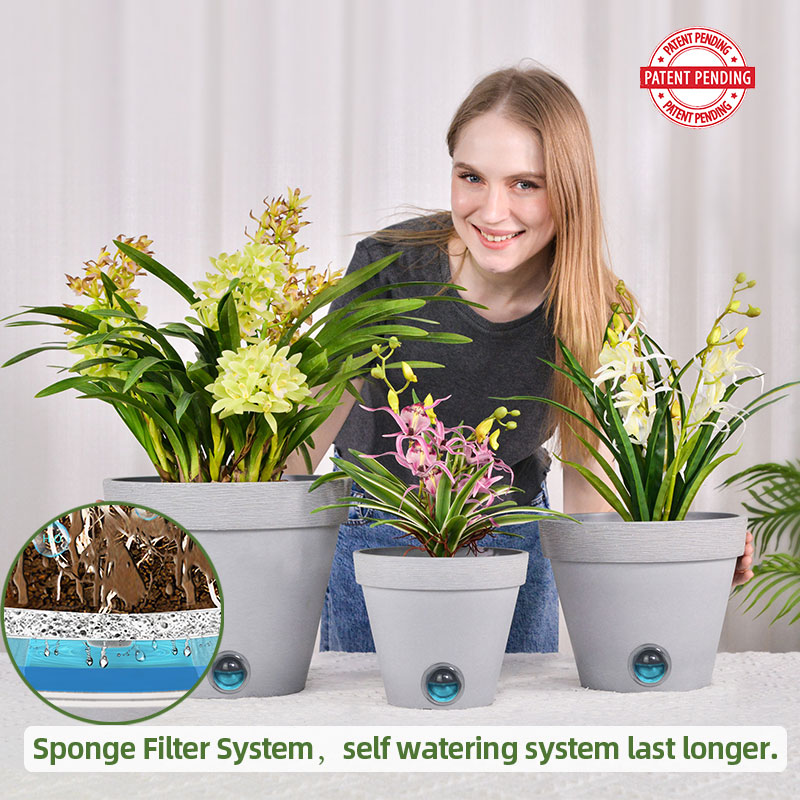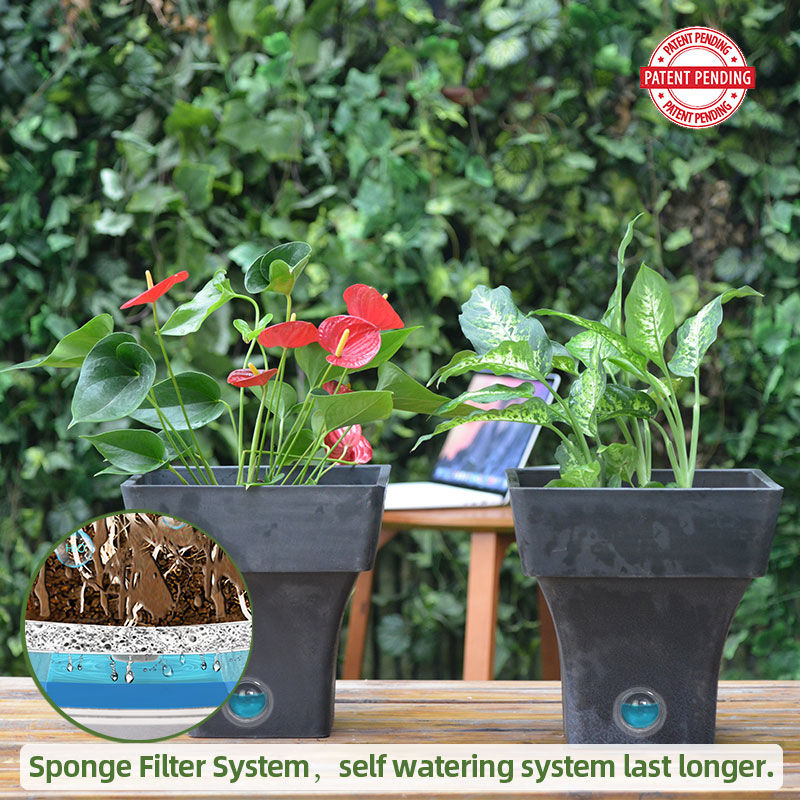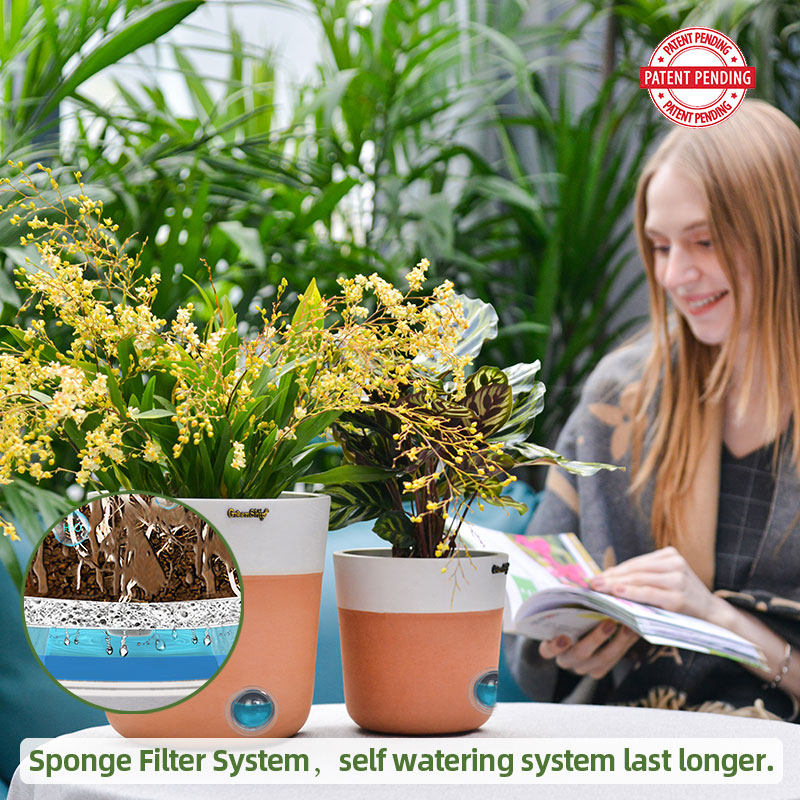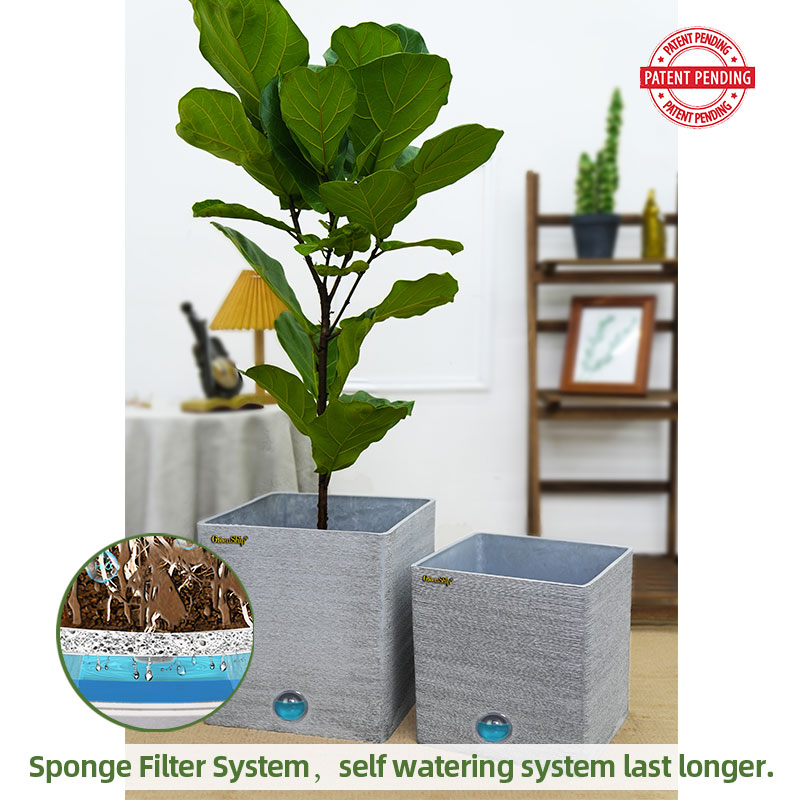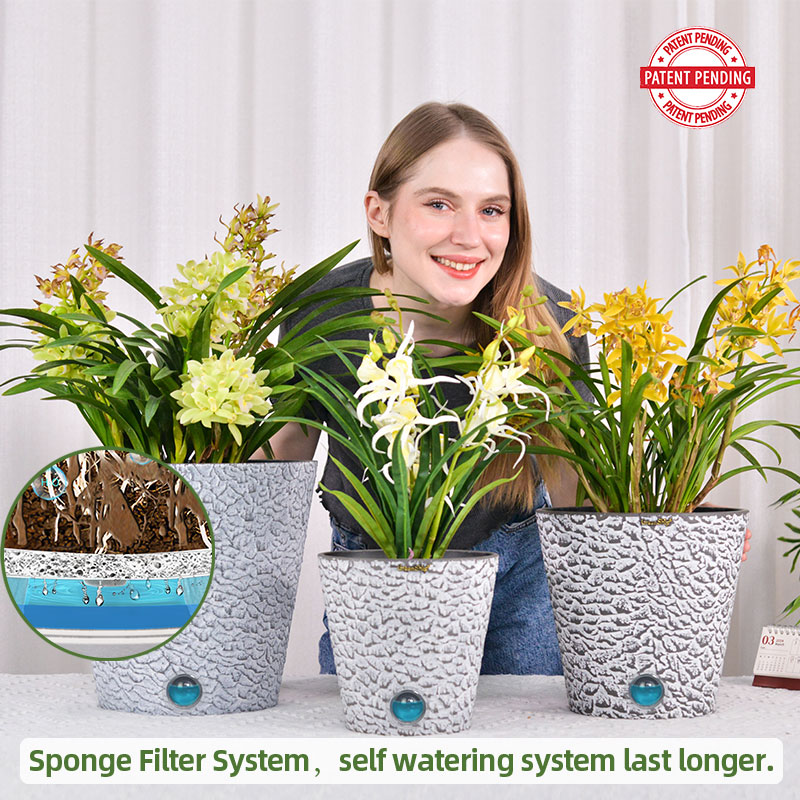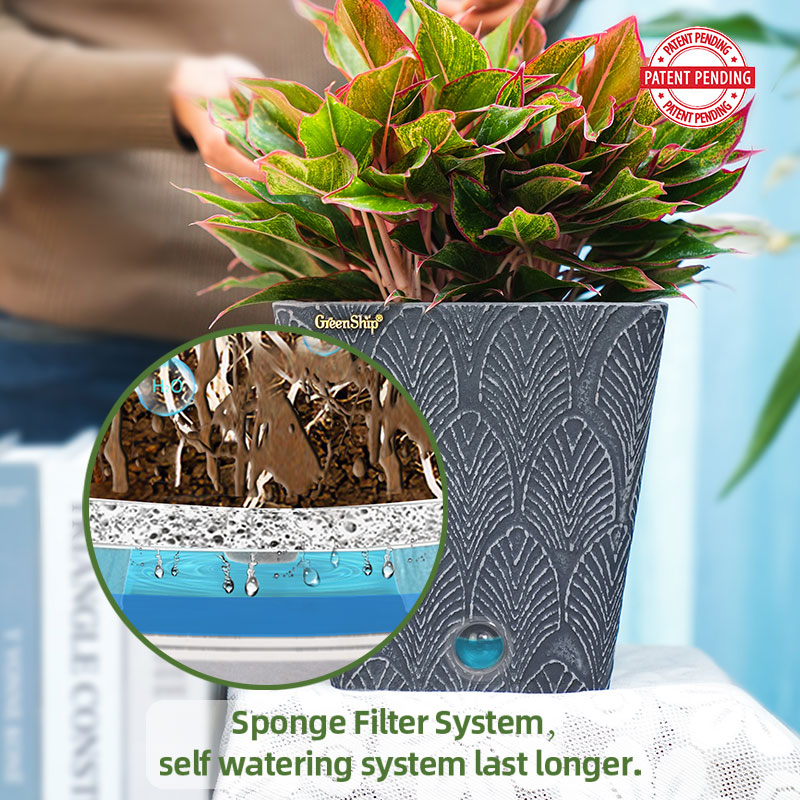What Soil should I use for My Planter?
The type of soil you use for your planter depends on the plants you’re growing and whether you’re using a self-watering planter or a traditional one. Here’s a guide to help you choose the right soil:
1. For Succulents and Cacti:
- Soil Type: Well-draining cactus or succulent mix
- Why: Succulents and cacti need good drainage to prevent root rot. A mix designed for these plants typically contains sand, perlite, and pumice to ensure fast drainage and air circulation around the roots.

2. For Herbs:
- Soil Type: Lightweight, well-draining potting mix (with added perlite)
- Why: Herbs generally prefer a loamy, slightly acidic soil that drains well. You can also mix regular potting soil with perlite or sand to increase drainage.
3. For Flowers (e.g., Petunias, Geraniums, Lobelia, Begonias):
- Soil Type: All-purpose potting mix
- Why: Flowering plants typically thrive in nutrient-rich, well-draining soil. Choose a high-quality, all-purpose mix that includes organic matter, like compost or peat moss, for moisture retention.
4. For Ferns:
- Soil Type: Moisture-retentive, peat-based potting mix
- Why: Ferns love consistent moisture and require soil that retains water but still drains well enough to prevent waterlogging. A peat-based mix with added perlite or vermiculite works best.

5. For Vegetables:
- Soil Type: Vegetable-specific potting mix (or all-purpose mix with compost)
- Why: Vegetables need a soil mix that’s rich in nutrients and has excellent drainage. An organic vegetable mix or a high-quality all-purpose mix amended with compost will provide the nutrition your plants need.
6. For Self-Watering Planters:
- Soil Type: Well-draining potting mix
- Why: While self-watering planters maintain moisture, the soil still needs to be well-draining. Opt for potting soil with a balanced mix of organic matter (such as compost), perlite, and vermiculite. This ensures that the water reservoir is used efficiently, preventing over-watering and root rot.

7. For Caladiums and Impatiens:
- Soil Type: Peat-based mix with good moisture retention
- Why: These plants thrive in consistently moist conditions. A peat-based soil mix retains moisture well but also needs to drain to prevent waterlogging.
General Soil Tips for Planters:
- Avoid heavy garden soil: Heavy, clay-like soil can lead to poor drainage and root rot in planters.
- Consider soil pH: Different plants prefer different pH levels. For example, succulents prefer a more alkaline mix, while ferns tend to do better in slightly acidic soil.
- Use soil amendments: If your mix seems too dense, consider adding perlite, sand, or vermiculite to improve drainage.
- Check moisture retention: Even in self-watering pots, the soil should be able to retain some moisture without staying waterlogged for too long.
Choosing the right soil mix is crucial for healthy plant growth. Be sure to match the soil type with your plant’s needs to ensure the best results!
GK-MM
By greenship|2024-03-26T01:19:58+00:00March 25, 2024|Categories: Healthy Root Self-Watering System|
M-10FA30
By greenship|2024-03-26T01:19:37+00:00March 25, 2024|Categories: Healthy Root Self-Watering System|
22A
By greenship|2024-03-26T01:20:28+00:00March 25, 2024|Categories: Healthy Root Self-Watering System|
GK-15UF
By greenship|2024-03-26T01:20:17+00:00March 25, 2024|Categories: Healthy Root Self-Watering System|
17PL
By greenship|2024-03-26T01:20:39+00:00March 25, 2024|Categories: Healthy Root Self-Watering System|
Y17SF
By greenship|2024-03-26T01:19:25+00:00March 25, 2024|Categories: Healthy Root Self-Watering System|

